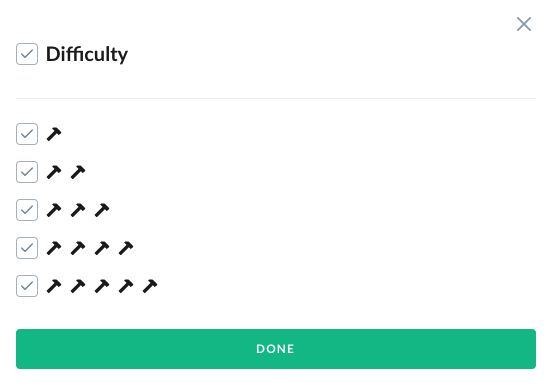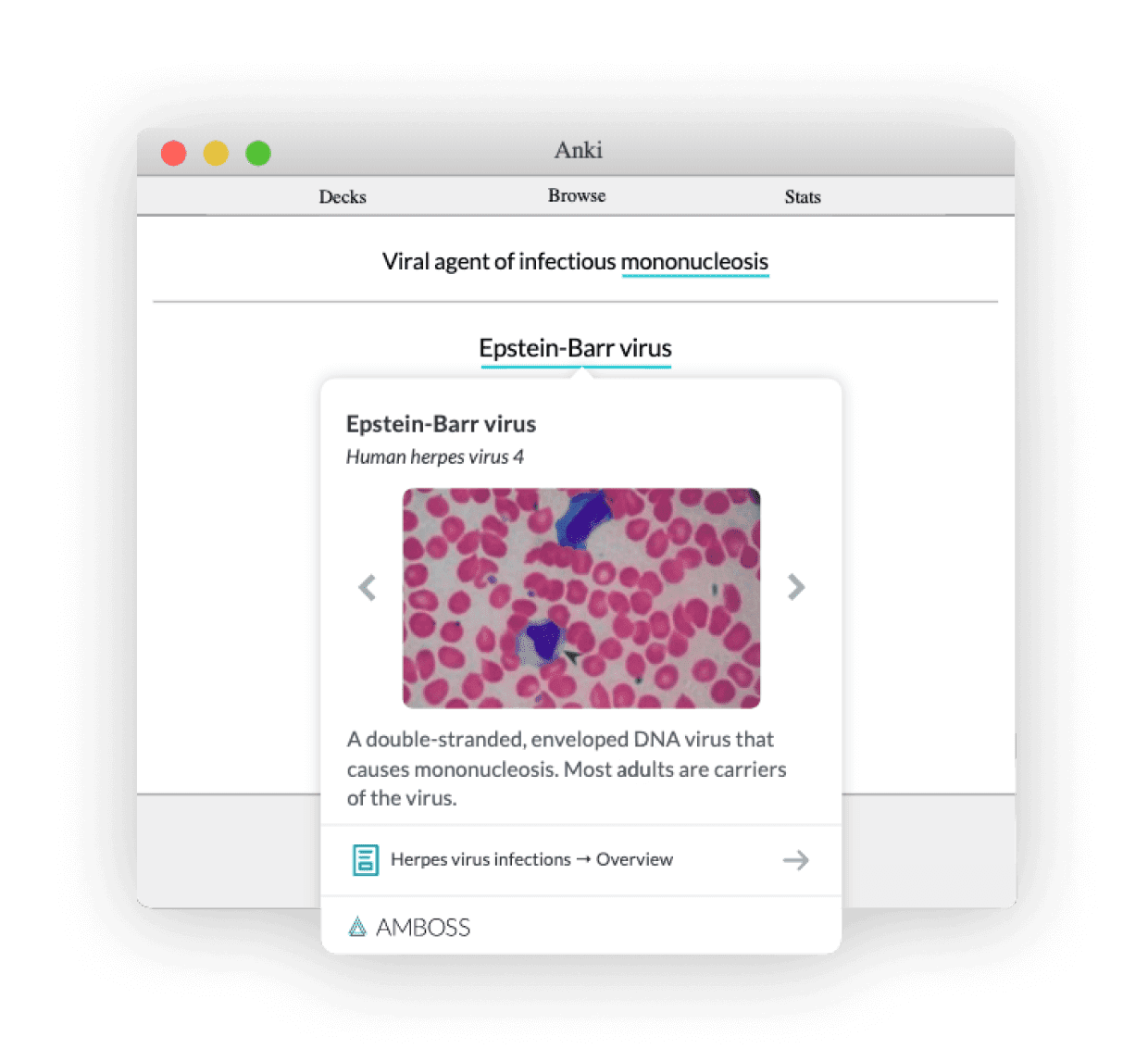

QBanks are a great resource to help you prepare for the USMLE Step 1. Keep reading to know if the AMBOSS QBank is worth your time.
Self-testing is essential to preparing for Step 1. With so many question banks to choose from, it can be tough to know which of them are worthwhile. Yousmle has already reviewed Kaplan’s question bank and made a guide on how to study for the USMLEs with Uworld. Here we will review the AMBOSS Qbank based on four criteria:
- Breadth – does it provide access to the range of testable topics on the USMLEs?
- Depth – does the question bank help you master concepts?
- Retention – does the resource help you remember the material?
- Application – do the strategies you learn apply to the real thing?
Summary:
- Excels in breadth and depth, to an extent some users may find overwhelming.
- No spaced-repetition tools, but its article library integrates well with any Anki deck.
- Vignettes help develop test-taking strategies but are not a replacement for NBME’s practice exams.
- AMBOSS Step 1 QBank Rating:
- Overall: 4.25/5
- Depth – 5/5
- Breadth – 5/5
- Retention – 3/5
- Application – 4/5
- Overall: 4.25/5
AMBOSS Step 1 QBank
Quick facts:
- Medical education platform with articles and a question bank for USMLE exam preparation
- ~2700 questions for Step 1 as of December 2022
- Performance analysis by topic and personalized study suggests
- ~1200 articles for board exams, clerkships, and transitioning to residency
Breadth: 5/5
- Pros:
- ~5600 questions covering all Step exams and clinical subject exams, ~2700 for Step 1
- Covers practically all topics covered on Step 1
- Tools to help focus information for your specific exam needs
- Partnership with Osmosis allows access to videos on selected topics
- Cons:
- Information overload; includes topics beyond Step 1
You can’t fault AMBOSS for lack of information. Subscribing to the AMBOSS question bank also gives you access to their medical education articles. Every question will have links to relevant articles for further reading.
The articles cover a lot of material. You’ll find a comparable article for any topic in First Aid. On top of that, AMBOSS has physical examination and clerkships guides as well as facts for Step 2 and 3. You will have access to most, if not all, information relevant to Step 1 and much more.
Highlight High-Yield Content
While AMBOSS excels in breadth students may find the volume of info overwhelming. Most students will want to focus on Step 1 content.
AMBOSS provides some tools to work around this. You can set filters for Step 1 questions, organ system, discipline (e.g. biostatistics, pharmacology), and much more. When reading their articles you can highlight high-yield facts for Step 1 and remove less relevant information.

By choosing Step 1 as your study goal, AMBOSS will let you highlight high-yield content and filter out higher-level material.
AMBOSS does lack integration with more popular board review books. As noted in our Kaplan Qbank review, Kaplan’s question bank features references to relevant pages in First Aid. If you have already been using and are used to First Aid, this may be a drawback for using AMBOSS.
Because AMBOSS gives subscribers access to practically all topics tested on Step 1 it gets a rating of 5/5.
Depth: 4/5
- Pros:
- A wide selection of easy to difficult questions lets you pick harder questions as you go
- Many questions teach concepts over fact memorization, helping you prep for Step 1
- Cons:
- Some of the highest difficulty questions may test concepts too niche to be useful on the exam
Dr. Palmerton has written a helpful article covering the rules NBME question-writers use to create exam questions. We know question-writers use language and different question stems to assess understanding rather than memorization.
Layered question stems will challenge you like USMLE exams
Stems can lay out all the important information for you, or they can make you sift through distractions. First-order questions will tell you the disease or medication and then ask you a question about it. For example (adapted from the AMBOSS Qbank):
A 28-year-old primigravid woman comes to the physician for a prenatal visit at 14 weeks gestation. She has been using cocaine for the past three years. Without cessation of cocaine use, which of the following complications is most likely to occur?
Higher-order questions only describe the disease process or drug. You’re expected to infer what they are talking about. The language they use might be different from anything you had seen before. Students will need to practice recognizing things from imperfect presentations. For example:
A 2550-g (5 lb 10 oz) female newborn is delivered at term to a 27-year-old woman. Examination of the newborn shows hypotonia in the lower extremities and a red, fleshy swelling without overlying skin in the lumbosacral region…. Which of the following best explains the pathogenesis of this patient’s condition?
In the first-order question example, cocaine was explicitly stated. In the higher-order example, myelomeningocele was described without using the textbook definition. From these examples, AMBOSS’s question bank will give you practice with tricky question stems to prepare you for USMLE exams.
Choose wisely – many questions are too detailed or difficult
AMBOSS lets you sort questions by difficulty. Easier ‘one-hammer’ questions tend to be fact-based. The tougher four and five-hammer ones are more complex.

You can choose the difficulty of each study session as you progress.
While using AMBOSS’ QBank, students may need to be careful when picking questions. Many of the five-star questions may be too difficult to be relevant for most exam-takers. Per AMBOSS’ recommendation, “5-hammer questions cover the most challenging 5% of exam content.” Five-hammers may feature “zebras” which don’t reflect the majority of what you will see on exam day. According to some students, most questions found on the NBME practice tests and Step 1 are similar to those in the three to four hammer range.
Many users have found that Uworld has fewer of these super-niche questions. Like the Kaplan QBank, AMBOSS has a tendency to over-emphasize details but generally does a better job balancing out the memorization and conceptual questions.
AMBOSS Qbank might overshoot conceptual depth and be too detail-oriented, but the ability to select more relevant ones earns them a score of 4/5.
Retention: 3/5
- Pros:
- Personalized suggestions for further reading based on question bank performance
- Integration of article library with Anki
- Cons:
- Lacks a dedicated flashcard or spaced-repetition learning tool
Working to understand medical concepts for Step 1 is one thing. Being able to recall that information when you need it on the exam is another. Information recall is another skill to learn and takes practice.
Like Kaplan, AMBOSS does not have its own flashcard tool. This is a downside compared to Uworld, which has a flashcard tool.
Anki add-on is the best use of AMBOSS articles
AMBOSS does have an Anki add-on that lets users easily access its article library within Anki. You can quickly reference terms while using your deck of choice. You can also copy text from their questions and paste them into Anki flashcards (Uworld doesn’t let you do that).
While going through questions in study mode you can mark them, save them by folder, and add notes. AMBOSS also will suggest articles to you based on topics you’ve struggled with.
Amboss doesn’t have a dedicated flashcard tool. But, it does integrate well with Anki and personalizes suggestions for further reading. AMBOSS will slightly outscore the Kaplan QBank with a 3/5.

The highlighted text will show definitions, pictures, and diagrams taken directly from the AMBOSS article library.
Application: 4/5
- Pros:
- Challenges users to differentiate noise from important information to develop test-taking skills.
- Exam mode features a user interface similar to real USMLE exams.
- Cons:
- Like most other review resources, AMBOSS won’t exactly simulate the USMLE exam experience better than NMBE practice tests.
The AMBOSS question bank has a study mode and an exam mode. Study mode lets you take extra time to answer questions and get helpful hints. Exam mode simulates the USMLE user interface and will have the same time constraints as the real exam (1 minute and 30 seconds). Ultimately, it’s not a substitute for taking the NBME-written practice tests. Many students say the style and language of the Free 120 and NBME practice exams are most reflective of the real thing.
Practice filtering out distracting information
Some Step 1 question stems will include distracting information, so you’ll need to learn how to find the important info. AMBOSS’ bank features a good mixture of distraction-filled questions and those that are more to the point. In this way, it is good for helping develop this test-taking skill which will be used when taking Step 1.
Many of the test-taking skills learned with the AMBOSS questions will apply to your Step 1 exam. However, it does not replace the experience of taking NBME-made practice tests. For this reason, AMBOSS gets a 4/5.
Conclusion – Overall Rating: 4/5
The AMBOSS question bank excels in breadth and depth, to the point some students may wish to tamper down the information load a bit. It lacks a dedicated flashcard tool to help with retention, but integrates with Anki and has personalized study tips. Most of the skills learned in this question bank will apply to the real thing, even if they don’t replace the NBME practice tests.
If you wouldn’t like to pay for their complete question bank there is a cheaper way to give it a try. The ~$10/month article-access subscription will give you 50 free questions every month. Also, AMBOSS may be useful as a longitudinal resource, since it also has material geared toward your shelf exams, Step 2, and Step 3. With a score of 4, the AMBOSS question bank may be a good option for students preparing for Step 1.







